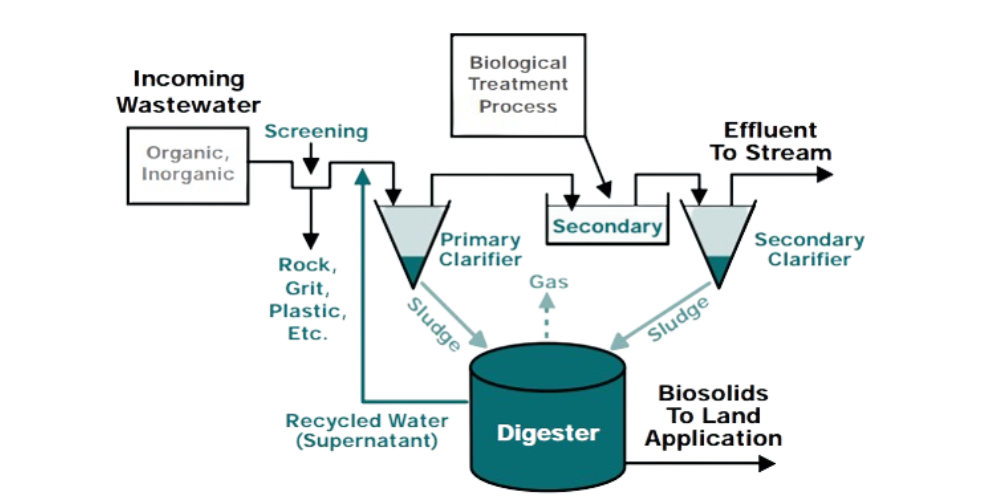
Biosolids are residues—solid, semisolid, or liquid—resulting from the treatment of sanitary sewage or domestic sewage in facilities known as treatment works treating domestic sewage. Coined in 1991 by the wastewater treatment industry, the term "biosolids" refers to residuals or solids formed during the biological treatment of wastewater.
The U.S. Environmental Protection Agency (USEPA) has recently adopted this terminology to distinguish high-quality treated sewage sludge from raw sewage sludge and sludge with significant pollutant levels. Hence, sewage sludges must undergo processing to meet USEPA standards for beneficial reuse before being classified as biosolids. The Michigan Department of Environmental Quality (MDEQ) has also endorsed this terminology in regulations effective since November 1999.
Biosolids contain both inorganic and organic compounds that are extracted during the wastewater treatment process. Utilizing biosolids for land application offers the advantage of nutrient content and soil enhancement to promote sustained crop production. Agricultural lands worldwide have successfully utilized sewage sludge for decades. However, land application is now subject to increasing regulations to safeguard human health and the environment from various constituents found in biosolids, including bacteria, viruses, metals like cadmium and lead, toxic organic chemicals like PCBs, and essential nutrients such as nitrogen and phosphorus.
The potential use of biosolids as fertilizer or soil amendment, versus their disposal as sewage sludges, hinges on several factors including their stability, level of pathogen treatment, pollutant concentrations, processing requirements, local geography, climate, land use, public perception, and regulatory requirements. Management options for biosolids/sewage sludge typically fall into four categories:
-
Landfill Disposal: It is a convenient method for handling biosolids, centralizing the material in one location. Properly constructed and maintained landfills minimize the risk of environmental pollution from biosolids. While cost-effective, challenges include identifying suitable sites and navigating permitting processes, compounded by landfill shortages in some areas. Anaerobic decomposition of buried organic waste generates methane gas, and without proper liners, chemicals and nutrients may contaminate groundwater. Additionally, the loss of potential benefits from organic matter and nutrient recycling is a drawback.
-
Surface Disposal: This entails depositing biosolids on specific land areas for final disposal. These sites can include monofils, lagoons, waste piles, surface impoundments, or dedicated disposal sites.
-
Incineration: The method involves the burning of biosolids at high temperatures in an enclosed device which ultimately reduces volume, eliminates pathogens, and breaks down most organic compounds. However, it demands energy and proper disposal of resulting ash. While the remaining ash is stable, it concentrates trace elements, necessitating landfill disposal. Incineration emits carbon dioxide, contributing to greenhouse gas emissions, and negates the benefits of organic matter and nutrient recycling.
-
Land Application: It involves applying biosolids to soil to improve soil quality and nourish crops or vegetation. This practice extends to agricultural land, forestland, reclamation sites, conservation areas, recreational land, and dedicated beneficial use sites. Typically, land application proves more cost-effective than alternative biosolids management approaches.
Process of Biosolids Production:
Biosolids are byproducts of treating domestic sewage or wastewater. Treatment processes, including biological, chemical, and physical methods, are employed to:
-
Remove suspended solids.
-
Decrease and eliminate organic matter to prevent oxygen depletion in receiving waters.
-
Disinfect and reduce pathogens in wastewater.
-
Lower the nutrient content before discharge.
These residuals, or biosolids, will be further treated in the TWTDS by additional biological, chemical, physical, and thermal processes to further reduce pathogen levels, reduce and stabilize the biodegradable solids, and reduce the amount of water relative to the number of solids (i.e., dewatering or drying).
















